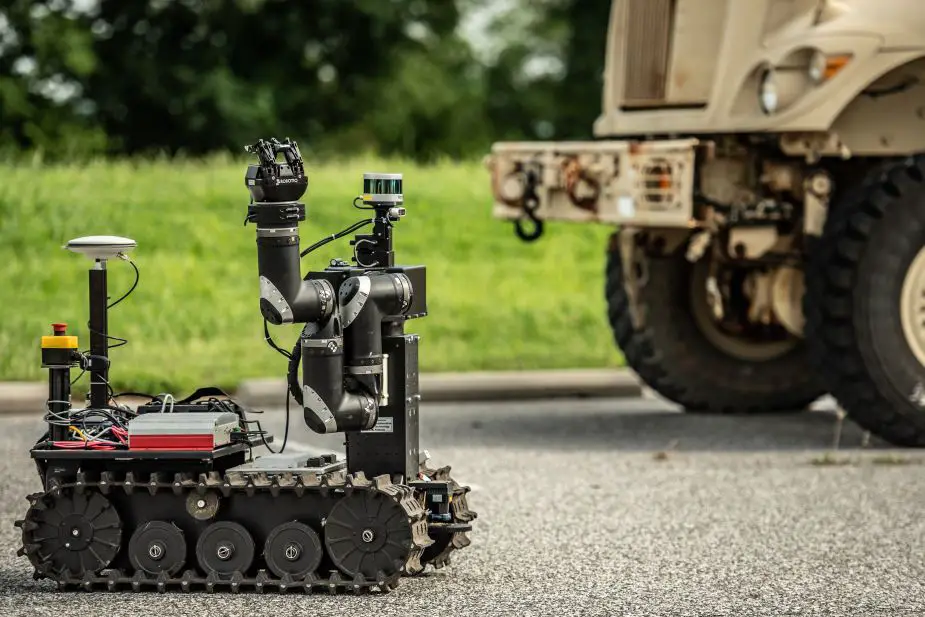U.S. Army researchers recently tested ground robots performing military-style exercises, much like Soldier counterparts, at a robotics testing site in Pennsylvania as part of a 10-year research project designed to push the research boundaries in robotics and autonomy.

RoMan, short for Robotic Manipulator, is a tracked robot with arms and hands -- necessary appendages to remove heavy objects and other road debris from military vehicles' paths. (Photo Credit: David McNally U.S. DoD)
RoMan, short for Robotic Manipulator, is a tracked robot that is easily recognized by its robotic arms and hands -- necessary appendages to remove heavy objects and other road debris from military vehicles' paths. What's harder to detect is the amount of effort that went into programming the robot to manipulate complex environments.
The exercise was one of several recent integration events involving a decade of research led by scientists and engineers at the U.S. Army Combat Capabilities Development Command's Army Research Laboratory who teamed with counterparts from the NASA/Jet Propulsion Laboratory, University of Washington, University of Pennsylvania, Carnegie Mellon University and General Dynamics Land Systems.
As part of ARL's Robotics Collaborative Technology Alliance, the work focused on state-of-the-art basic and applied research related to ground robotics technologies with an overarching goal of developing autonomy in support of manned-unmanned teaming. Research within the RCTA program serves as foundational research in support of future combat ground vehicles.
The recent robot exercise was the culmination of research to develop a robot that reasons about unknown objects and their physical properties and decides how to best interact with different objects to achieve a specific task.
During the recent exercise, RoMan successfully completed such as multi-object debris clearing, dragging a heavy object (e.g., tree limb), and opening a container to remove a bag.














